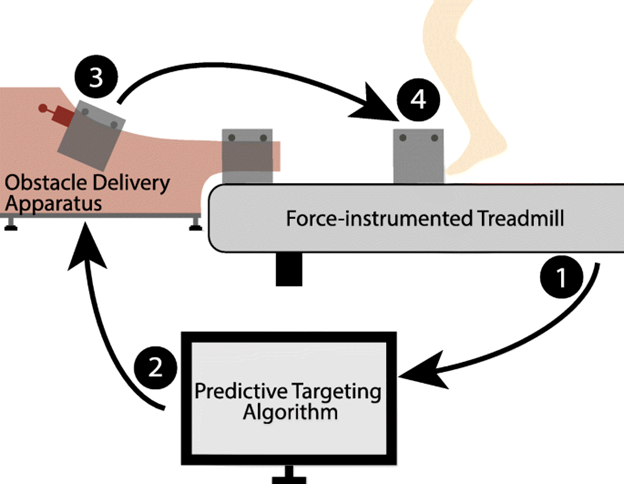Stumble Recovery
People with lower-limb amputation, particularly with transfemoral amputation, are much more susceptible to falling as a result of stumble, relative to age-matched healthy counterparts. We have been investigating the causes of the increased susceptibility to swing-phase perturbations, and in particular have been conducting studies to: 1) understand the causes of falling as a result of stumble; 2) identify deficiencies in commercially-available prostheses (relative to the healthy limb) that lead to falls following stumble perturbations; and 3) determine if reflexive behaviors implemented in experimental knee prostheses can potentially reduce the likelihood of a fall, and if so, what type of reflexive behaviors might be most effective. Our studies in this regard have included: 1) studies on the stumble reflexes of healthy individuals; 2) studies on the stumble reflexes on individuals with commercially-available prostheses; and 3) studies on stumble reflexes with experimental prosthesis prototypes.

Schematic of the stumble perturbation system. A subject walks on the instrumented treadmill. Ground reaction forces and moments are collected (1) and used to calculate the center of pressure under the foot, which is then used to detect gait events. These gait events are used to calculate the time at which the obstacle should be released using the predictive targeting algorithm (2). At this time the electromagnet turns off (3) and releases the obstacle onto the treadmill such that a perturbation is introduced (4) at the desired percent of swing phase.
Video of obstacle delivery
Stumble recovery experiments with healthy individuals
Stumble recovery reflexes in the Vanderbilt powered prosthesis